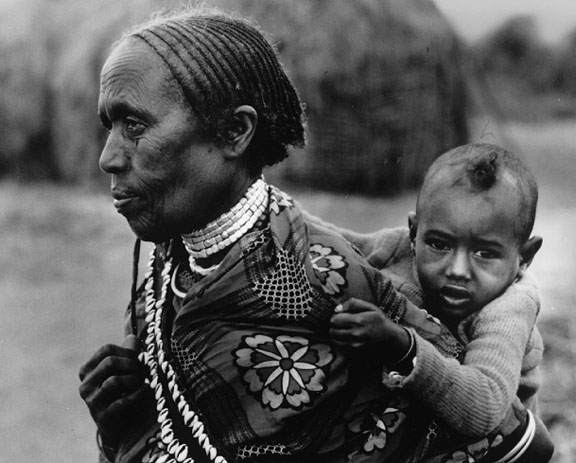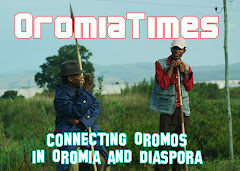By DAVID OCHAMI
Exports from Moyale indicate a recurrence of ethnic killings among communities, which violence is connected to the political dynamics in Ethiopia and has defied all religious, political and community expertise to solve. The security apparatus including the police and military remain impotent, unable to monitor movement of armed men.
For some years the pastoralist communities in those parts have been caught in the vortex of violence between the Addis Ababa government and Oromo rebels, the latter infiltrating into Kenya in flight with Ethiopian forces in hot pursuit. Collusion between some Kenyans and the rebels has been alleged. In many cases the majority of the people are victims of Ethiopia suspicions and victimisation by Kenyan authorities accusing them of harbouring the insurgents.
The insurgents are also known to exploit the Kenya government’s inability to control Northern Kenya to infiltrate, hide and victimise those opposed to their agenda. Meanwhile local politicians have used different sides of the Oromo-Addis Ababa conflict to further their political agenda often cooperating with the foreign gunmen to fight local conflict.
The real and imagined presence of Oromo rebels in Kenya is not the only problem between Addis Ababa and Nairobi, the two capitals that have historically cooperated especially over the matter of Pan Somalia nationalism, which in Addis Ababa’s mind is rearing its ugly head with the rise of an Islamist authority in Mogadishu.
In the wake of the 1977 to 1978 Ogaden war between Ethiopia and Somalia, Kenya and Mengistu Haile Mariam’s Ethiopia signed a ten-year defence agreement to coordinate this nationalism/irredentism. It was set for renewal in 1991, the year that Mengistu was ousted. By the way the Ogaden war involved Somalia’s claim to the region in Ethiopia occupied by ethnic Somalis and the dramatic defection of Colonel Abdillahi Yusuf Ahmed to then Ethiopia. He is now the Transitional Federal Government’s (TFG) president, stranded in Baidoa, under Ethiopia’s protection, unable to paste his claim to power to the rest of Somalia.
The TFG was mediated in Kenya but Yusuf was unable to move to Somalia for almost three years. In the meantime the US and Ethiopia tried to install him in Mogadishu in a catastrophic war that routed warlords from Mogadishu. The warlords were not Yusuf’s allies either but the people who emerged in Mogadishu were worse enemies for religious, historical and political conviction.
Despite Ethiopia’s support Yusuf is nowhere near power, reviled by Somali nationalists and religious minded citizens as a stooge of the Ethiopians and a fortiori the USA, and thus a sellout.
The failure to revive the 1979 defence treaty engendered a vacuum, partly encouraged by the collapse of Somalia itself, hence temporary demise of Pan Somali nationalism and rise of inflexible rulers in Addis Ababa led by Meles Zenawi who placed much belief in his military abilities, the result being an endless internal and external conflict with rebels in the West, East and South and also Somalia and Ethiopia. Zenawi does not believe in consensus, as suggested by Kenya’s Foreign Affairs minister Raphael Tuju early August while opening a special Intergovernmental Authority on Development (IGAD) meeting where he accused some regional actors of sabotaging the Kenyan mediated peace process.
There is an undeclared rift between Addis Ababa and Nairobi over the Somalia matter, being felt in the most unlikely theatre in the ethnic violence in Moyale and Marsabit. There is no likelihood of Addis Ababa using this conflict to destabilise Kenya. But elements in Addis Ababa want that part of the region in perpetual flux to allow Ethiopia free infiltration into Kenya to pursue rebels and to show Nairobi who the regional policemen is. So the strategy is to fund and train tribal militia among the feuding tribes in those parts.
The source of the problem between the neighbours is Kenya’s inability or unwillingness to do Addis Ababa’s and US’ bidding as far as Yusuf and the Muslims in Mogadishu are unconcerned. To Ethiopia’s consternation Kenya came close to recognising the new Islamist leadership in Mogadishu and chased away deposed warlords from its territory.
Addis Ababa was trying to harness them against the new leaders in Mogadishu in a effort to tie them to a grand alliance with Yusuf to storm Mogadishu. Meanwhile Kenya has also resisted pressure by the Americans to investigate foreign embassies in Nairobi accused of funding the so called Islamists in Mogadishu despite allowing the US to fund the ousted warlords from its capital. Kenya refuses to support Zenawi’s military adventure in Somalia.
Kenya has made its own demands on Yusuf on its own. The Foreign ministry has persistently solicited Yusuf’s attention for Nairobi’s mediation and facilitation, alarmed at his obsession with errant Ethiopia to no avail. The problem however is Kenya’s lack of consistence and the government’s vulnerability to wrong advice by Somalia experts and envoys with self and tribal motives, a deficiency that has historically allowed Nairobi to perpetually live in Ethiopia’s shadow.
Kenya requires neither a confrontation with Ethiopia nor involvement in Somalia. Despite the problem posed by instability in Somalia, the historical policy of equidistance should be maintained for there is no likelihood of parts of its territory being claimed by Somalia, in the near future. It could pay even to just sit and watch.
e-mail davidkoch2@yahoo.com
Subscribe to:
Post Comments (Atom)



No comments:
Post a Comment